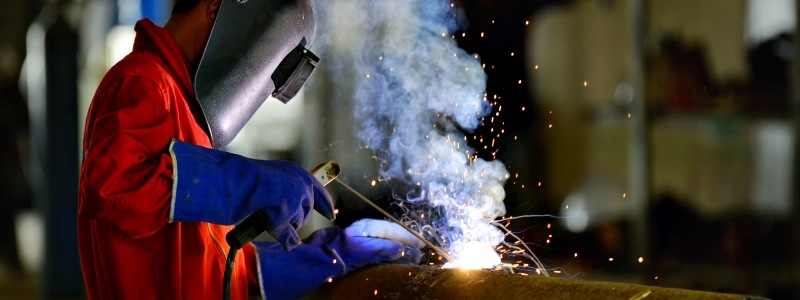This program establishes written procedures to prevent fires resulting from temporary operations involving an open flame or that produces heat, sparks, or hot slag. This includes (but is not limited to) brazing, cutting, grinding, soldering, thawing pipes, torch-applied roofing, and welding. This written program will require the issuance of a Hot Work Permit before beginning hot work.
Scope
This program applies to Michigan Tech employees and contractors who perform or supervise hot work activities in existing buildings, new construction in existing buildings, and new construction attached to existing buildings.
This program does not apply to areas that are specifically designed and equipped for such operations, e.g., designated welding areas.
Procedures
Hot work should not be performed if the work can be avoided or performed in a safer manner. When practical, objects to be welded, cut, or heated must be moved to a designated safe location, e.g., a designated welding area.
If hot work must be performed, a Hot Work Permit must be obtained from the Facilities Department building zone manager before the hot work begins.
All precautions on the Hot Work Permit must be met prior to performing any hot work. The Hot Work Permit will be issued by the building zone manager and is valid only for the date(s) and time specified on the permit. A copy of the permit must remain at the hot work location until the hot work is completed.
All personnel (employees, contractors, building occupants) must be suitably protected against hazards generated by the work (e.g., heat, sparks, fumes, welding rays, etc.). This may include, but is not limited to, the use of personal protective equipment, shields, screens, or local exhaust ventilation.
Prohibited Conditions
A Hot Work Permit will not be issued if any of the following conditions exist:
- Sprinkler protection is impaired.
- Appropriate fire fighting equipment is not readily available.
- Combustible or flammable materials are within 35 feet and cannot be moved or protected.
- Floor and wall openings cannot be covered.
- Cutting or welding on pipes or other metals can conduct enough heat to ignite nearby combustible materials.
- Any condition that could result in undue hazards by performing the work.
Department Responsibilities
- Recognize its responsibility for the safe use of cutting and welding equipment in their area.
- Establish designated areas for cutting and welding.
- Ensure hot work procedures are being implemented and followed in other than designated areas.
- Ensure that supervisors, cutters, and welders are suitably trained in the operation of the equipment and the safe use of the process.
- Ensure that contractors follow University procedures.
Supervisor Responsibilities
- Ensure that all employees and contractors are following hot work procedures.
- Ensure that a hot work permit is issued prior to the start of work.
- Ensure that all cutting and welding equipment is in satisfactory condition and in good repair.
- Ensure that employees are suitably trained in the operation of the equipment and safe use of the process.
- Ensure that contractors follow University procedures.
Employee Responsibilities
- Follow and use hot work procedures.
- Obtain a hot work permit prior to starting work.
- Ensure that all cutting and welding equipment is in satisfactory condition and in good repair.
- Attend and actively participate in training sessions.
- Protect nearby personnel and passers by against heat, sparks, etc. when working in occupied buildings.
Fire Watch Responsibilities
- Ensure proper fire fighting equipment is readily available.
- Locate the nearest fire alarm pull station.
- Inspect hot work area before any hot work is conducted.
- Extinguish fire only when within trained capabilities to safely do so.
- Stay on watch at least one hour after hot work has been completed.
A fire watch is required whenever protective measures are necessary for the following conditions:
- Appreciable combustible material is within 35 feet of the point of operation.
- Appreciable combustibles more than 35 feet away may be easily ignited by sparks.
- Wall or floor openings within 35 feet expose combustibles in adjacent areas including confined spaces.
- Combustibles could be ignited by conduction or radiation through metal partitions, walls, ceilings, or roofs.
Department of Occupational Safety and Health Service Responsibilities
- Update Hot Work Program as needed.
- Provide assistance with program implementation and administration.
- Provide assistance in training supervisors, employees, and project managers.
Outside Contractor Work
Michigan Tech project managers are responsible for ensuring that outside contractors follow hot work procedures when working on the Michigan Tech campus.

